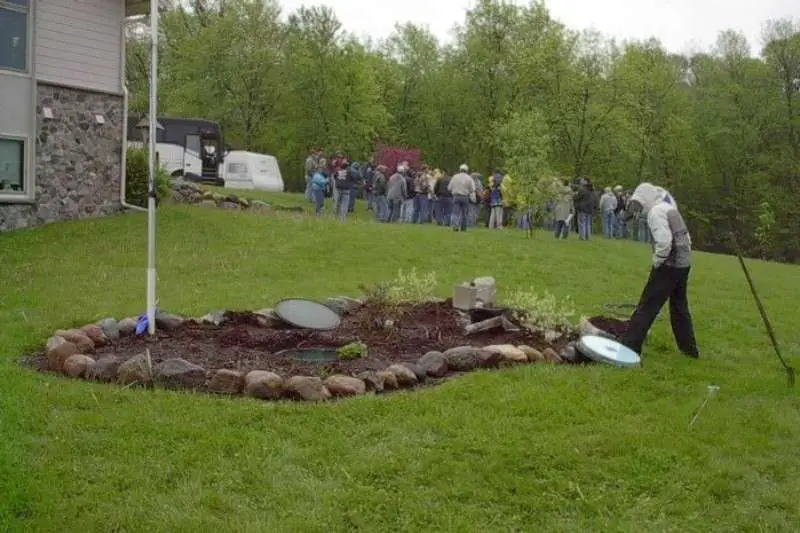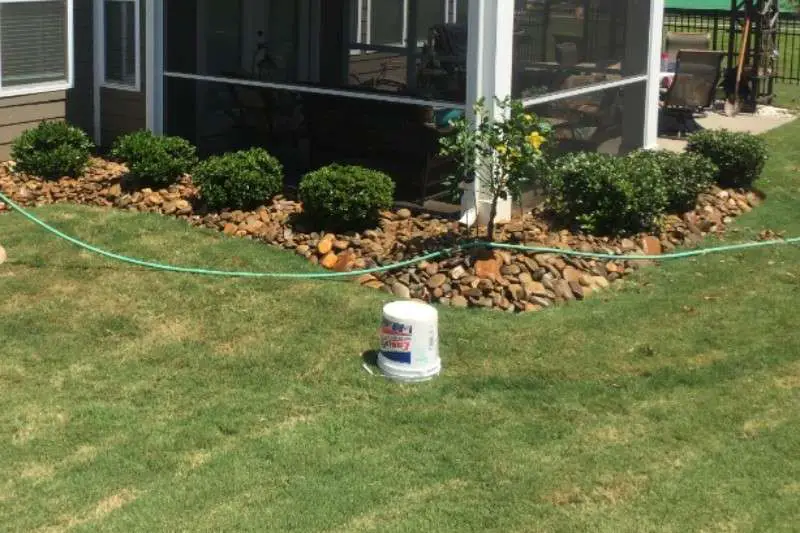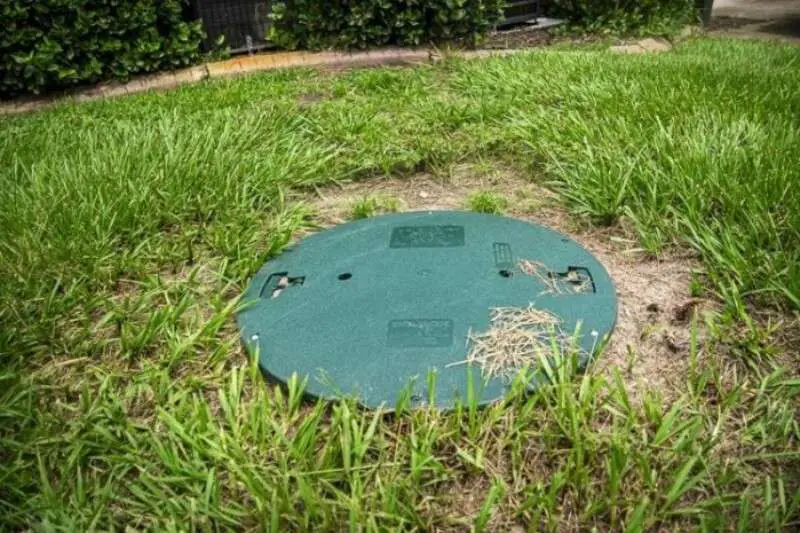As the custodians of our own homes and yards, it’s important to look after all elements of your property with care. A large fact is that proper upkeep should encompass even the least visible parts of our surroundings, such as septic systems.
Sewage disposal happens out-of-sight but can still seriously affect your home in various ways if not properly cared for, including through landscaping decisions that can greatly contribute to helping ensure safe and efficient operation.
This post will discuss how proper landscaping around septic systems helps preserve the efficiency and safety of these vital tools on any residential property.
Introduction to landscaping around septic systems
Landscaping around a septic system is essential to ensure proper functioning. The area around the septic tank and other components should be clear of debris, plants, and any obstructions that could interfere with maintenance, repair, or replacement.
Landscaping around a septic system should be designed with aesthetics and functionality. Poorly maintained landscaping can contribute to septic system failure and compromise the health of the land around it. It is important to choose plants that are for the area, can tolerate eating conditions, and won’t cause any interference with components of a septic system. Additionally, large trees and shrubs should be avoided as roots may encroach on underground pipes or damage components of the system.
When landscaping around a septic system, it is essential to balance aesthetics and functionality. Planting trees and shrubs can help reduce noise and provide privacy while creating an inviting outdoor space for entertaining. Additionally, drought-tolerant plants can reduce the amount of water used for irrigation and help conserve resources. When planting vegetation near a septic system, choosing plants that are easy to maintain and can tolerate wet or moist soil conditions without posing a risk to the system is important.
Choosing the right plants for the drain field
Choosing the right plants for the drain field is essential to maintaining a healthy and functioning septic system. It’s best to select shallow-rooted, drought-tolerant plants that require little water and don’t grow excessively tall or wide. Some of the best plants for this purpose are grasses such as Bermuda Grass, fescue, and rye.
These plants have minimal root systems that won’t penetrate deep into the drain field’s soil or interfere with its functioning. Ornamental grasses like ornamental fountain grass can also be planted around the septic tank and drain field as long as shallow-rooted plants are trimmed to a reasonable size.
It’s important to avoid planting certain plants around the drain or septic field since they can interfere with normal functioning. These include deep-rooted trees and shrubs, such as willow, maple, dogwood, and magnolia. Large or invasive species like weeds, thistles, and brambles should also be avoided due to their potential to overtake the landscape and damage the septic system.
In addition to plant selection, proper landscaping around a septic system is important for its low maintenance amount. Keeping the area around the drain field free from debris, such as mulch and gravel, can help ensure good air circulation and prevent any blockages or clogs in the system. Keeping a few feet of open ground around the drain field is also recommended to prevent overcrowding or shading of the soil.
By selecting shallow-rooted, septic-safe plants and properly maintaining their landscaping around the drain field, homeowners can ensure that their septic system has been functioning properly for years.
Maintaining a safe distance between trees and septic systems

Maintaining a safe distance between trees and septic systems is essential for protecting yours. Trees can cause several issues if planted too close to your septic tank or drain field, including clogged pipes and collapsed tanks. Tree roots can grow and damage the pipes and drain lines, preventing wastewater from properly flowing through your system.
The risks associated with tree roots and septic systems are serious and costly and must be addressed promptly. It’s important to remember that even trees planted far away from your septic tank system may still pose a risk if their roots travel underground. For this reason, the best practice is to exercise caution when planting trees near your septic system.
When planting trees or shrubs around a septic tank or drain field, the general rule is to keep any foliage at least 10 feet away from both. Additionally, all tree roots should be kept away from the septic tank drain field and pipes—an area extending 15 feet out in all directions is recommended for roots-free septic systems.
Finally, it’s important to be mindful of the types of trees you’re planting near your septic system, as some tree species tend to develop more aggressive root systems than others. Trees with shallow or aggressive roots, such as cherry trees such as willows, poplars, and oaks, should not be planted within 10 feet of the system, as their roots can quickly cause damage and blockages.
Preventing soil compaction and erosion
Proper landscaping around septic systems is essential for proper maintenance and upkeep. Without it, compaction and erosion can hurt the performance of your system over time. Understanding how compaction and erosion impact your septic system is important to properly care for and maintain it.
Soil compaction is the process by which soil particles are pressed together, reducing space between them. This reduces air and water filtration in the soil, making it difficult for water to move through and away from your system. Compacted soils can cause drainage problems, eventually leading to septic system failure.
Erosion occurs when soil particles are carried away by wind or water. This can cause your system to become unbalanced and lead to a buildup of solids, clogging your pipes and creating a blockage.
Maintaining healthy soil is important to prevent compaction and erosion around septic systems. This includes avoiding activities that cause compaction, such as driving vehicles or heavy equipment on top of the ground. Planting a cover crop around the system will help hold soil particles in place while retaining moisture to promote healthy plant growth. Additionally, adding organic matter to the soil will increase its ability to absorb and filter water. Finally, mulching or applying compost over exposed soils will help keep your system healthy and running properly.
Designing an accessible septic system landscape
When designing a landscape around your septic system, it’s important to keep accessibility top of mind. While it is possible to mask the presence of your septic system with landscaping, you need to ensure that easy access points are available for inspections and pumping services. Planning will save time and money in the long run.
When laying out your landscape design, look for logical access points and incorporate them into the plan. This might mean leaving an open area with grass or gravel around the septic system or replacing a section of lawn with pavers to provide easy access in case of emergency. If you’re building a deck or patio near your system, you can create a removable area of pavers or planks to provide access.
Allowing enough room for a truck and trailer combination to move around the system and maneuver into position for pumping services is also important. This requires at least 15 feet of clearance on all sides and overhead clearances if needed. If possible, consider leaving a turnaround area to allow the truck and trailer to reverse out of the access area.
Avoiding the use of heavy equipment and structures

Planting and landscaping around septic systems can be done safely so as not to damage or disrupt the system. It is important to remember that all heavy equipment, vehicles, structures, and any other load-bearing items should not be placed on any part of the septic system. This will help avoid risks associated with potential damage to the components of a septic system.
When landscaping around a septic system, it is recommended to use lighter-weight materials such as mulch and topsoil. Heavy equipment and machinery should not be used on any septic system part. Additionally, no structures like sheds or decks should be built over or near the septic system.
It is also important to avoid building sidewalks, driveways, or other impervious surfaces over the septic drain field, as this can reduce the absorption and cause potential overflows from the tank. Maintaining landscaping friendly to a septic system means avoiding invasive plant roots near any components, especially in the drain field. Roots can break down the pipes, cause blockages, and create other potential problems with the system.
FAQs:
What plants are best for landscaping around a septic system?
The best plants for landscaping around a septic system require little water and have shallow root systems. Ornamental grasses, low-lying shrubs, groundcovers, and native species are good options. Avoid trees with deep roots or spiky structures like cacti.
How far away should trees be planted from septic tanks and drain fields?
Trees should be 10 to 20 feet from a septic tank and drain field. Deep root systems can damage the pipes, so avoiding planting trees or shrubs too close is important. Lighter-weight plants like grasses, groundcovers, and low-lying shrubs are better choices for landscaping near an aseptic system.
Can I build a patio, deck, or shed over my septic system?
No. It is important to avoid building structures or heavy equipment over or near your septic system. This can cause damage to the components and reduce their ability to absorb and filter water properly.
How can I disguise my septic tank lid or access points in my landscape design?
You can disguise your landscape design’s septic tank lid or access points using pavers, planks, native grasses, gravel, and other landscaping materials. You may also consider incorporating a section of removable pavers on decks or patios for easy access.
Are there any specific landscaping materials to avoid around septic systems?
Yes, avoiding heavy equipment, machinery, and structures like sheds or decks is important. Avoiding impervious surfaces, such as concrete or asphalt, over the drain field is also important.
Can I install a sprinkler system near my septic tank and drain field?
No. Sprinkler systems should not be installed near a septic tank and drain field as this can cause water to saturate the area, leading to possible overflows or other issues with the system.
Conclusion
Septic systems are important components of any residential property, and proper landscaping plays an instrumental role in preserving both their efficiency and safety. By taking the time to plan a landscape that is conducive to safe septic use, you can ensure that your system works as expected while preventing contamination and other potential issues. Designs that work with the natural environment instead of fighting against it can provide better results in the long term. Professional landscapers can be consulted to explore options that meet local building codes, so don’t hesitate to call them if you are uncertain about how best to proceed.


